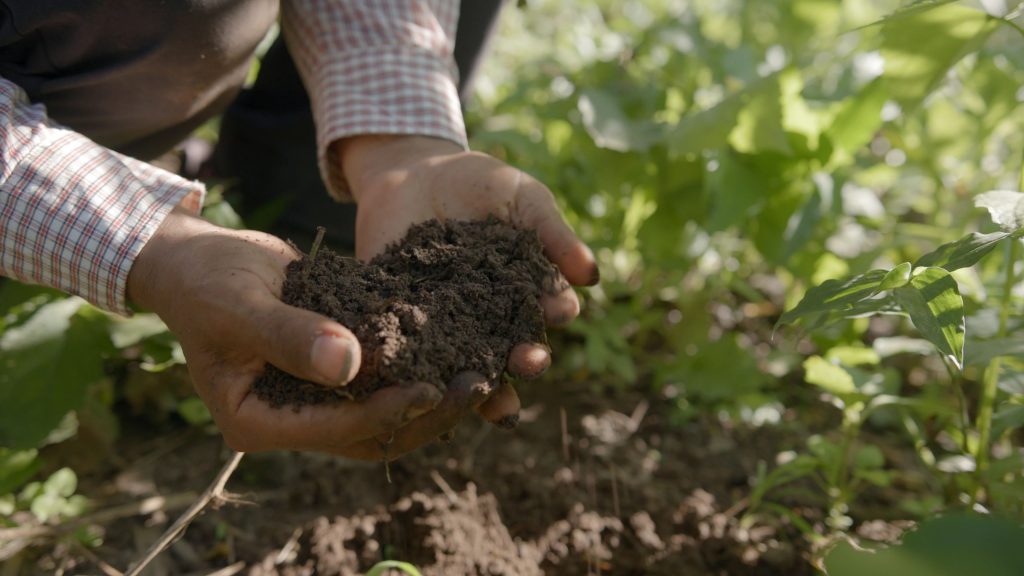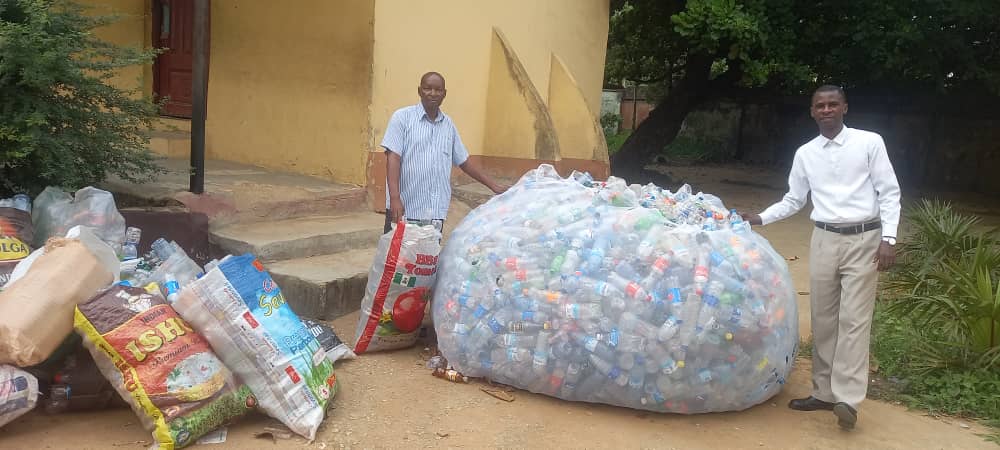
 The theme of World Environment Day The theme of World Environment Day 2024 is ‘Land Restoration, Desertification and Drought Resilience‘. The slogan of this event will be “Our Land, Our Future.” We are Generation Restoration.
The theme of World Environment Day The theme of World Environment Day 2024 is ‘Land Restoration, Desertification and Drought Resilience‘. The slogan of this event will be “Our Land, Our Future.” We are Generation Restoration. 
This year’s World Environment Day campaign focuses on land restoration, desertification and drought resilience under the slogan “Our land. Our future. We are #GenerationRestoration.” Drought and desertification are threatening essential ecosystems across the planet, including freshwater ecosystems and soil, the connective tissue that makes all life on Earth possible.
Here is a closer look at what makes terrestrial and land-based ecosystems so unique and, in some cases, awe-inspiring.
Soil and water
Almost 60 per cent of all species live in soil, making land the planet’s most biodiverse habitat.
Healthy soils store massive amounts of carbon, which, if released, would cause a huge spike to planetary warming.
Only 0.5 per cent of water on Earth is useable and available freshwater. Climate change is dangerously affecting that supply.
Over the past two decades, land-based water storage—including soil moisture, snow and ice— has dropped at a rate of 1 centimetre per year with severe ramifications for water security and food production.
Drylands
Drylands – areas which face great water scarcity—cover 41 per cent of the Earth’s land surface and 78 per cent of the world’s rangelands.
Drylands generate 44 per cent of global crops, are the source of feed for half of the world’s livestock and support the lives and livelihoods of more than 2 billion people.
Despite what the name suggests, drylands are home to more than a quarter of the world’s forests, a third of global biodiversity hotspots and provide critical migration points for birds.
Deserts
Deserts cover more than one-fifth of the Earth’s land area and are found on every continent.
The Sahara is the largest hot desert in the world, spanning 9.4 million square kilometers, about the size of Canada.
Despite its reputation for being lifeless, the Sahara Desert is home to 500 plant species, 70 mammalian species, 100 reptilian species, 90 avian species, and several arthropods, such as spiders and scorpions.
Many deserts are expanding because of climate change but some countries are fighting back including the 22 countries in Africa that border the Sahara Desert where the Great Green Wall initiative aims to restore 100 million hectares of land through a mosaic of green and productive landscapes.
Forests
Forests cover 31 per cent of the Earth but they are not equally distributed as more than half of the world’s forests are found in only five countries: Brazil, Canada, China, the Russian Federation and the United States of America.
Forests are home to more than half of the world’s land-based species of animals, plants and insects.
More than 28,000 plant species are currently recorded as being of medicinal use and many of them are found in forest ecosystems.
Soil microorganisms are important in producing antibiotics. Penicillin, for example, comes from a small fungus living in the soil.
The largest organism on Earth is a fungus in the Blue Mountains of the United States. Covering about 965 hectares of land, the fungus could be as ancient as 8,650 years, which would earn it a place among the oldest living organisms in the world.
Freshwater
Lakes, rivers and wetlands hold 20–30 per cent of global carbon despite occupying only 5–8 per cent of its land surface.
The Nile River is widely regarded as the world’s longest waterway. Starting in East Africa, it flows through 11 different countries and stretches 6,695 kilometres.
Approximately 1.4 billion livelihoods worldwide are directly reliant on access to fresh water, including jobs related to the food and beverage, energy and water industries.
Farmlands
Every five seconds, the equivalent of one football pitch of soil is eroded. Yet, it takes 1,000 years to generate 3 centimetres of topsoil.
Every year more than 24 billion tonnes of priceless topsoil are washed or blown away worldwide, as the land is overcultivated and overgrazed and trees and forests are cut down.
The world will need to raise its food production by 60–70 per cent to feed a projected human population of 9 billion by 2050 even as the current agricultural expansion continues to threaten forests and biodiversity.
Close to 75 per cent of the world’s fruit and seed crops depend, at least in part, on pollinators like bees. Pollinators contribute to 35 per cent of the world’s total crop production, pollinating 87 of 115 leading food crops worldwide.
Despite their importance, pollinators are in serious decline, primarily due to intensive agricultural practices, pesticide use, invasive species, diseases and climate change.
Globally, at least 2 billion people depend on the agriculture sector for their livelihoods, particularly poor and rural populations.
Cities
Cities occupy three per cent of the Earth’s land surface but are home to more than half its people.
Cities account for 75 per cent of global resource and energy use and produce more than half of global waste and at least 60 per cent of greenhouse gas emissions.
More than one-third of the biggest cities, including Barcelona, Bogota, New York and Tokyo, source a significant proportion of their high-quality drinking water from protected forests nearby.
Trees in urban areas can cool the air by up to 5°C, reducing air conditioning needs by 25 per cent. Urban trees provide multiple health benefits such as cleaner water. They also clean the air and reduce flooding among many other benefits.
https://www.worldenvironmentday.global/did-you-know/fun-facts

DoTheDream Youth Development Initiative is a non profit organisation that uses formal and informal education as a creative tool through communications, media, and technology in empowering youths towards promoting change in the society.
An organisation in Special Consultative Status with the United Nations Economic and Social Council (ECOSOC) in New York, Geneva and Vienna,with the vision of Building youths for Sustainable Development.
Our role in SDGs 7 is to connect the youths to the opportunities that encourages innovations in value chains and cause growth for sustainable development
#GirlsinEnergy aimed at inspiring, educating, and empowering young girls to pursue careers in the energy sector through dynamic combination of conferences, competitions, career mentorship, and camps, #GirlsinEnergy seeks to bridge the gender gap in STEM fields, particularly in energy-related industries was declare open by the Initiator Adebusuyi Olutayo Olumadewa
The event featured a dynamic career session with distinguished international speakers, including Rehana Mohamed EdD Lady B Bless , and Dr. Oladunni Owo , who shared their personal experiences and motivated the young participants to follow their aspirations in energy.
Mrs. Arogbodo, Principal of Ayedeere Ajibola Senior High School, warmly welcomed attendees and underscored the project’s potential to empower young women and pave the way for their success in the energy industry. Miss Otayomi Esther, Tutor in Charge, encouraged students to maximize the benefits of the initial 300 hours of the program.
Rehana Mohamed EdD delivered an inspiring keynote address highlighting the critical role of the energy sector and the transformative impact of the Girls in Energy project. She emphasized the program’s mentorship opportunities, career workshops, and site visits to leading energy companies, all aimed at equipping participants with the skills and knowledge necessary for thriving careers in energy.
Lady B Bless, co-founder and co-chair of the African & Caribbean Energy Network (ACEN) , spoke passionately about the importance of educating girls in energy as a pathway to women’s empowerment and sustainable development. Sharing her personal journey in the energy industry and her advocacy for gender equality in leadership, Lady B Bless expressed enthusiasm for the upcoming cohort and pledged her ongoing support to the participants.
Dr. Oladunni Owo further motivated the students by emphasizing the importance of career guidance and personal ambition in shaping their professional journeys.As the founder, Women in Energy, Oil & Gas (WEOG) delivered a compelling message on the urgency of closing the gender gap in the energy sector. She noted that 70% of energy solutions directly address national challenges and encouraged young girls to envision the world without energy to appreciate its critical importance. She shared inspiring examples of youth-led innovations in energy. She concluded with a call to action to “bring energy into the classroom” and introduced the empowering slogan:
“Energy Girls Closing Energy Gaps, Energy Girls Moving Nigeria Forward.”
Canadian Renewable Energy Association (CanREA) U.S. African Development Foundation (USADF) The Global Energy Alliance for People and Planet (GEAPP) International Energy Agency (IEA) International Renewable Energy Agency (IRENA) African Bank Sustainable Energy for All (SEforALL) Damilola Ogunbiyi Foluke Michael Damilola Olaniyi Anita Otubu Tunbosun Afolayan, SCMP®,CNN SDG7 Youth Constituency Simon Gosling
